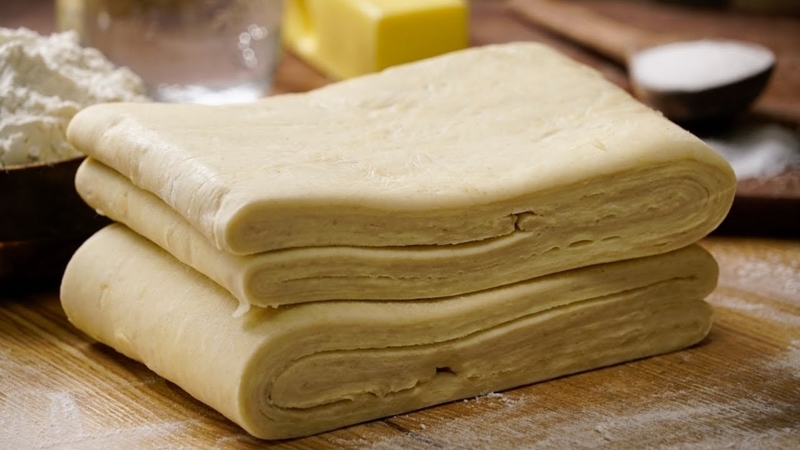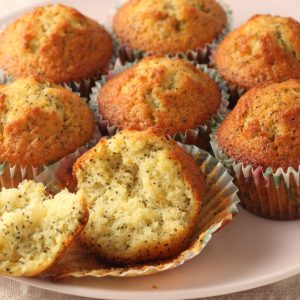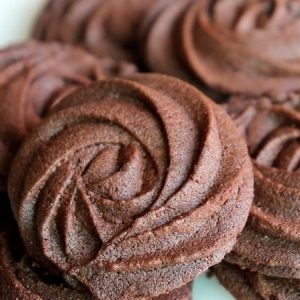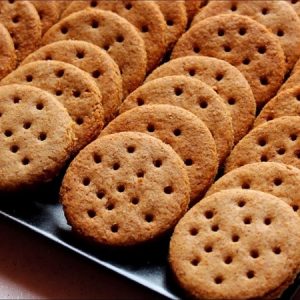This dough can be used with both sweet and savory dishes. To start you need white all-purpose flour and put it in the food processor to that added sugar, kosher salt. Process the mixture to mix it together and air it. Next, add cold unsalted butter to the mixture that is cut in small chunks to blend better. Pulse it until the mixture is crumbly. Pour ¼ of a cup of ice water sprinkling it on top of the dough and pulse it not into a bowl of dough just until it starts to clump.
Add water if needed and continue pulsing until the dough starts to clump together when pinched. Do not process more than about 30 seconds. Turn the dough out onto your work surface and gather it into a ball. Empty the food processor right on the counter and gather it up. Then divide it into two equal sizes. Place the dough in plastic wrap and press it and wrap it up and refrigerate about an hour. One the frozen roll it out and you can get little specs of butter.
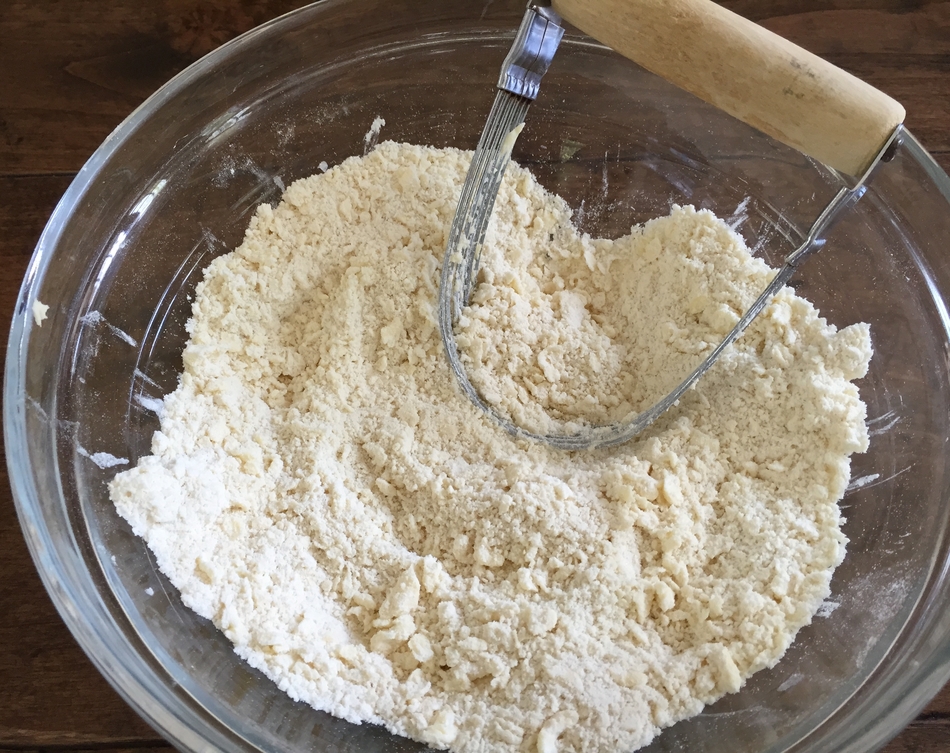
Lightly flour the counter and roll from the center out and move it around. If the dough cracks, put it together and keep moving it around to prevent it from sticking and keep rolling. Try to keep it in a fairly round shape. Feel the dough to kind of make it of even thickness. To make sure it is the right size, take your pie pan, flip it over, and place it on the rolled out pastry.
The pastry should be about 2 inches larger than your pan. When the pastry is rolled to the desired size, lightly roll pastry around your rolling pin, dusting off any excess flour as you roll. Unroll onto the top of your pie pan. Never pull the pastry or you will get shrinkage (shrinkage is caused by too much pulling of the pastry when placing it in the pan).
Gently lay it in a pan and with a small with your fingertips, lightly press the pastry onto the bottom and up the sides of the pan. Flute the edges of the pastry or use the tines of a fork to seal the pastry. If possible, chill the pie crust before filling and baking. The pastry is now ready to use.
Ingredients;
- 2 1/2 cups (350 grams) all-purpose flour
- 1 teaspoon (4 grams) salt
- 1 tablespoon (14 grams) granulated white sugar
- 1 cup (2 sticks) (226 grams) unsalted butter, chilled, and cut into 1 inch (2.5 cm) pieces
- 1/4 to 1/2 cup (60 – 120 ml) ice water
Instructions;
- In a food processor, place the flour, salt, and sugar and process until combined. Add the butter and process, using the pulse button, until the mixture is crumbly resembling a coarse meal (about 15 seconds).
- Pour 1/4 cup (60 ml) of ice water in a slow, steady stream, through the feed tube until the dough starts to clump together when pinched (it should not be a solid ball of dough). Add remaining water, if necessary. Do not process more than about 30 seconds.
- Turn the dough out onto your work surface and gather it into a ball. Divide the dough into two equal pieces, flatten each portion into a 5 inch (12 cm) disk, cover with plastic wrap, and refrigerate for 30 – 60 minutes, or until firm enough to roll out.
- At this point, you can also freeze the dough for about a month. Defrost the dough in the refrigerator for several hours or even overnight before using it.
- For each disk of pastry, on a lightly floured surface, roll out the pastry to fit into an 8 or 9 inches (20 to 23 cm) pie pan.
- To prevent the pastry from sticking to the counter and to ensure uniform thickness, keep lifting up and turning the pastry a quarter-turn as you roll (always roll from the center of the pastry outwards to get uniform thickness).
- To make sure it is the right size, take your pie pan, flip it over, and place it on the rolled out pastry. The pastry should be about 2 inches (5 cm) larger than your pan.
- When the pastry is rolled to the desired size, lightly roll pastry around your rolling pin, dusting off any excess flour as you roll. Unroll onto the top of your pie pan. Never pull the pastry or you will get shrinkage.
- Gently lay in pan and with a small floured piece of pastry or with your fingertips, lightly press the pastry onto the bottom and up the sides of the pan.
- Flute the edges of the pastry or use the tines of a fork to seal the pastry. If possible, chill the pie crust before filling and baking. The pastry is now ready to use.

